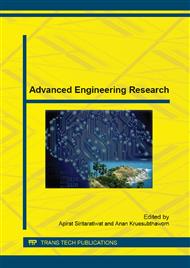p.312
p.316
p.321
p.325
p.329
p.333
p.337
p.341
p.346
Optimal Placement of Distributed Generation Using Bacterial Foraging Optimization Algorithm
Abstract:
This paper presents the determination of the optimal distributed generation (DG) placement using bacterial foraging optimization algorithm (BFOA). The BFO mimics the seeking-nutrient behavior of the E. coli bacteria. It is utilized here to find the location and size of the DG installation in radial distribution system in order to obtain minimum system losses. The operation constraints include bus voltage limits, distribution line thermal limits, system power balance and generation power limits. The algorithm is tested on the IEEE 33 bus system. The result shows that the algorithm could be used as an alternative to the other techniques and improvement of the algorithm is required for acceleration and better accuracy of the calculation.
Info:
Periodical:
Pages:
329-332
Citation:
Online since:
August 2015
Authors:
Price:
Сopyright:
© 2015 Trans Tech Publications Ltd. All Rights Reserved
Share:
Citation:


